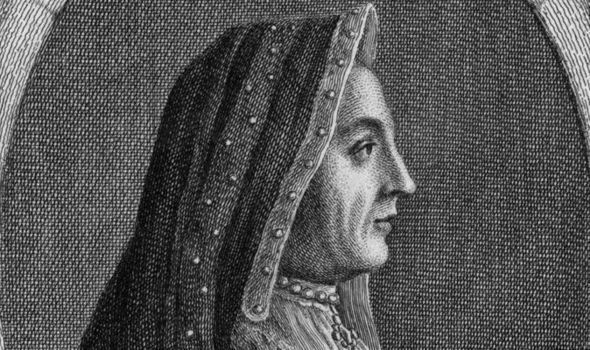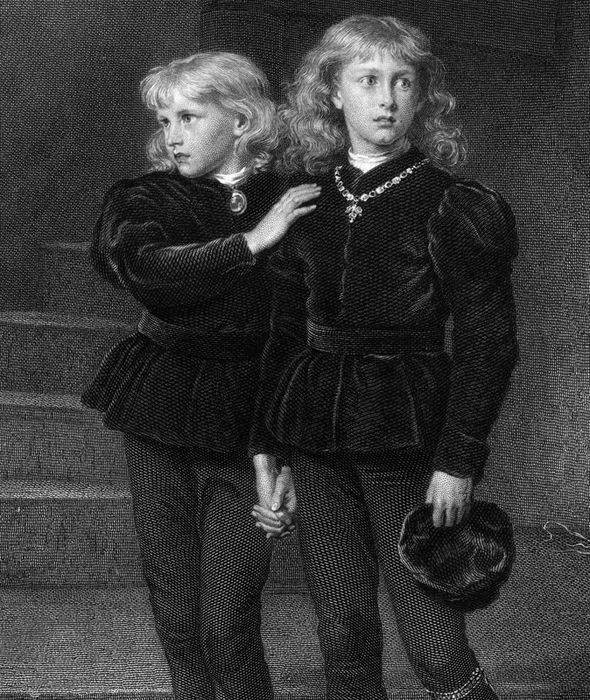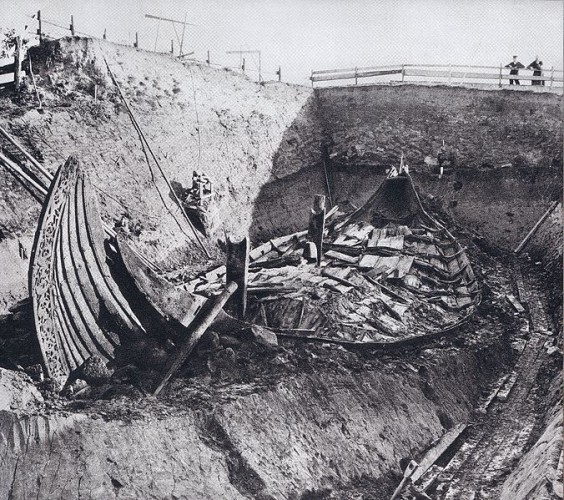 Ambitious: Margaret Beaufort was the mother of Henry Tudor, who went on to become Henry VII
Ambitious: Margaret Beaufort was the mother of Henry Tudor, who went on to become Henry VII
A frigid fanatic in high necklines she is the ultimate tiger mother. A woman willing even to commit child murder as she plots her son Henry Tudor's path to the throne.
But this is a depiction shaped by centuries of sexual and religious bigotry and by our still ambivalent attitudes to powerful women.
Female historians and novelists may claim a sisterly empathy for historical women but all too many of them are willing to plunder misogynistic myths to write their lives. And Margaret Beaufort is not their only victim.
I first noticed how readily writers will use and rework old myths when researching the life of the so-called Nine Days Queen, Lady Jane Grey, executed aged 16 in 1553.
Eighteenth and 19th-century stories and images depicting Jane's mother as a man-eating child abuser were being rehashed. They claimed her ambition led to her daughter's death, casting her in the role of a wicked queen to Jane's Snow White. It is a version of history that sends out a message that good girls are helpless while bad ones are ambitious.
In the Tudor period and for centuries afterwards it was considered wrong and unnatural for women to wield power. It followed that the kind of woman who sought power was also unnatural - so how to depict them? Well what could be more unnatural, more against a woman's proper nature than the abuse of children?
It seems no coincidence that Margaret Beaufort stands accused of planning the deaths of the White Queen's young sons, the so-called princes in the Tower, to clear the path for Henry Tudor to be king. The irony is that the real Margaret Beaufort was what we would consider to be an abused child. She was married at 12 and was so small and slight that her son's birth when she was 13 nearly killed her. She was unable to have further children and for the next 25 years Margaret was a pawn and victim of vicious power politics.
It was the beginning of the Wars of the Roses, a struggle between cousins in which the white rose House of York fought for supremacy over the red rose House of Lancaster, the family from which Margaret came. When the white rose triumphed Margaret's sole hope for Henry was that he would have the right to inherit his father's properties and titles and live in safety in England. This was denied her.
Aged 14 Henry was forced to flee into exile from Yorkist King Edward IV in fear of his life. Margaret worked hard to get a royal pardon for her son so he could come home. She had not succeeded when in 1483 Edward IV died after catching a cold while out fishing. But everything then changed. Shockingly Edward IV's sons, aged 12 and 10, were placed in the Tower by their uncle, who claimed the throne as Richard III.
Female historians and novelists may claim a sisterly empathy for historical women but all too many of them are willing to plunder misogynistic myths to write their lives. And Margaret Beaufort is not their only victim.
I first noticed how readily writers will use and rework old myths when researching the life of the so-called Nine Days Queen, Lady Jane Grey, executed aged 16 in 1553.
Eighteenth and 19th-century stories and images depicting Jane's mother as a man-eating child abuser were being rehashed. They claimed her ambition led to her daughter's death, casting her in the role of a wicked queen to Jane's Snow White. It is a version of history that sends out a message that good girls are helpless while bad ones are ambitious.
In the Tudor period and for centuries afterwards it was considered wrong and unnatural for women to wield power. It followed that the kind of woman who sought power was also unnatural - so how to depict them? Well what could be more unnatural, more against a woman's proper nature than the abuse of children?
It seems no coincidence that Margaret Beaufort stands accused of planning the deaths of the White Queen's young sons, the so-called princes in the Tower, to clear the path for Henry Tudor to be king. The irony is that the real Margaret Beaufort was what we would consider to be an abused child. She was married at 12 and was so small and slight that her son's birth when she was 13 nearly killed her. She was unable to have further children and for the next 25 years Margaret was a pawn and victim of vicious power politics.
It was the beginning of the Wars of the Roses, a struggle between cousins in which the white rose House of York fought for supremacy over the red rose House of Lancaster, the family from which Margaret came. When the white rose triumphed Margaret's sole hope for Henry was that he would have the right to inherit his father's properties and titles and live in safety in England. This was denied her.
Aged 14 Henry was forced to flee into exile from Yorkist King Edward IV in fear of his life. Margaret worked hard to get a royal pardon for her son so he could come home. She had not succeeded when in 1483 Edward IV died after catching a cold while out fishing. But everything then changed. Shockingly Edward IV's sons, aged 12 and 10, were placed in the Tower by their uncle, who claimed the throne as Richard III.
 Margaret as portrayed by Amanda Hale in the BBC's The White Queen
Margaret as portrayed by Amanda Hale in the BBC's The White Queen
Richard showed no more inclination than Edward IV to allow Henry Tudor home but when the princes vanished that summer and rumours emerged that Richard had ordered their deaths Margaret saw an opportunity. She suggested to the mother of the princes - the "White Queen", Elizabeth Woodville - that she agree to marry her eldest daughter to Henry Tudor. Edwardian loyalists could then combine with remaining Lancastrians to overthrow Richard and make Henry king.
Less than two years later Richard III was killed in battle at Bosworth and Henry Tudor was crowned. Margaret - the Red Queen - would gain huge political influence and become one of the richest women in England. Clearly she had benefited from the disappearance of the princes but it would not be until 110 years after her death that she would be accused of child murder. The accusations first arose only during the reign of witch-burning misogynist James I. This was the era of the Stuarts, the Tudor line was defunct and so it was possible to re-assess Henry Tudor's enemy Richard III in a more positive light. That meant finding someone other than Richard responsible for the disappearance of his nephews. Cases in which children disappear are haunting and no one has forgotten the story of the Princes in the Tower.
Margaret was an easy target, in part because of the praise that had been lavished on her by her priestly confessor John Fisher. England had undergone the Reformation. Stuart England was thoroughly Protestant and Margaret's Catholic spirituality was now condemned, while her intelligence and toughness of character were regarded with equal suspicion.
In 1646 conman George Buck, who was passing off a history composed in 1619 by a great uncle as his own, published his uncle's accusation that Margaret was a "subtle and politic lady" who had sought to kill the princes with poison and sorcery to clear the way for Henry. As we see in the novels of Philippa Gregory and the BBC's White Queen, it is as a child murderer that she is being portrayed again.
Less than two years later Richard III was killed in battle at Bosworth and Henry Tudor was crowned. Margaret - the Red Queen - would gain huge political influence and become one of the richest women in England. Clearly she had benefited from the disappearance of the princes but it would not be until 110 years after her death that she would be accused of child murder. The accusations first arose only during the reign of witch-burning misogynist James I. This was the era of the Stuarts, the Tudor line was defunct and so it was possible to re-assess Henry Tudor's enemy Richard III in a more positive light. That meant finding someone other than Richard responsible for the disappearance of his nephews. Cases in which children disappear are haunting and no one has forgotten the story of the Princes in the Tower.
Margaret was an easy target, in part because of the praise that had been lavished on her by her priestly confessor John Fisher. England had undergone the Reformation. Stuart England was thoroughly Protestant and Margaret's Catholic spirituality was now condemned, while her intelligence and toughness of character were regarded with equal suspicion.
In 1646 conman George Buck, who was passing off a history composed in 1619 by a great uncle as his own, published his uncle's accusation that Margaret was a "subtle and politic lady" who had sought to kill the princes with poison and sorcery to clear the way for Henry. As we see in the novels of Philippa Gregory and the BBC's White Queen, it is as a child murderer that she is being portrayed again.
 Victims of ambition: The princes in the tower disappeared
Victims of ambition: The princes in the tower disappearedPortraying Margaret as a religious nutcase shows an arrogant blindness to the culture of our past
Margaret had become immensely powerful after Henry was crowned and powerful women are still judged unsympathetic. There also remains a visceral anti-Catholicism in England that has been reinforced by modern fears of Islamism. In The White Queen Margaret is depicted as a fanatic, ever invoking God. Yet the strict religious devotions of Margaret Beaufort's old age were commonplace among noblewomen of her time. They marked an effort to look beyond the ruthless political culture into which they had been born, to understand Christ's example of love.
Portraying Margaret as a religious nutcase shows an arrogant blindness to the culture of our past. That is worrying in a shrinking world when we need to be able to understand other viewpoints, other beliefs.
This summer, in which we have celebrated the birth of a future king to Kate and William, we should remember with a little more generosity the 13-year-old Margaret Beaufort who bore Henry Tudor. Here was a girl who took control of her destiny, who saved her son from exile and danger and who helped found the Tudor dynasty.
Not a villainess at all but a survivor and a heroine.
Tudor: The Family Story, by Leanda de Lisle (Chatto & Windus, £20) is out now.
Portraying Margaret as a religious nutcase shows an arrogant blindness to the culture of our past. That is worrying in a shrinking world when we need to be able to understand other viewpoints, other beliefs.
This summer, in which we have celebrated the birth of a future king to Kate and William, we should remember with a little more generosity the 13-year-old Margaret Beaufort who bore Henry Tudor. Here was a girl who took control of her destiny, who saved her son from exile and danger and who helped found the Tudor dynasty.
Not a villainess at all but a survivor and a heroine.
Tudor: The Family Story, by Leanda de Lisle (Chatto & Windus, £20) is out now.


 On this day in history, 30th September 1544, King Henry VIII returned to England after his victory in Boulogne. The French forces had surrendered on 13th September after a siege which had lasted from 19th July. Edward Hall records the campaign in his chronicle:
On this day in history, 30th September 1544, King Henry VIII returned to England after his victory in Boulogne. The French forces had surrendered on 13th September after a siege which had lasted from 19th July. Edward Hall records the campaign in his chronicle:




